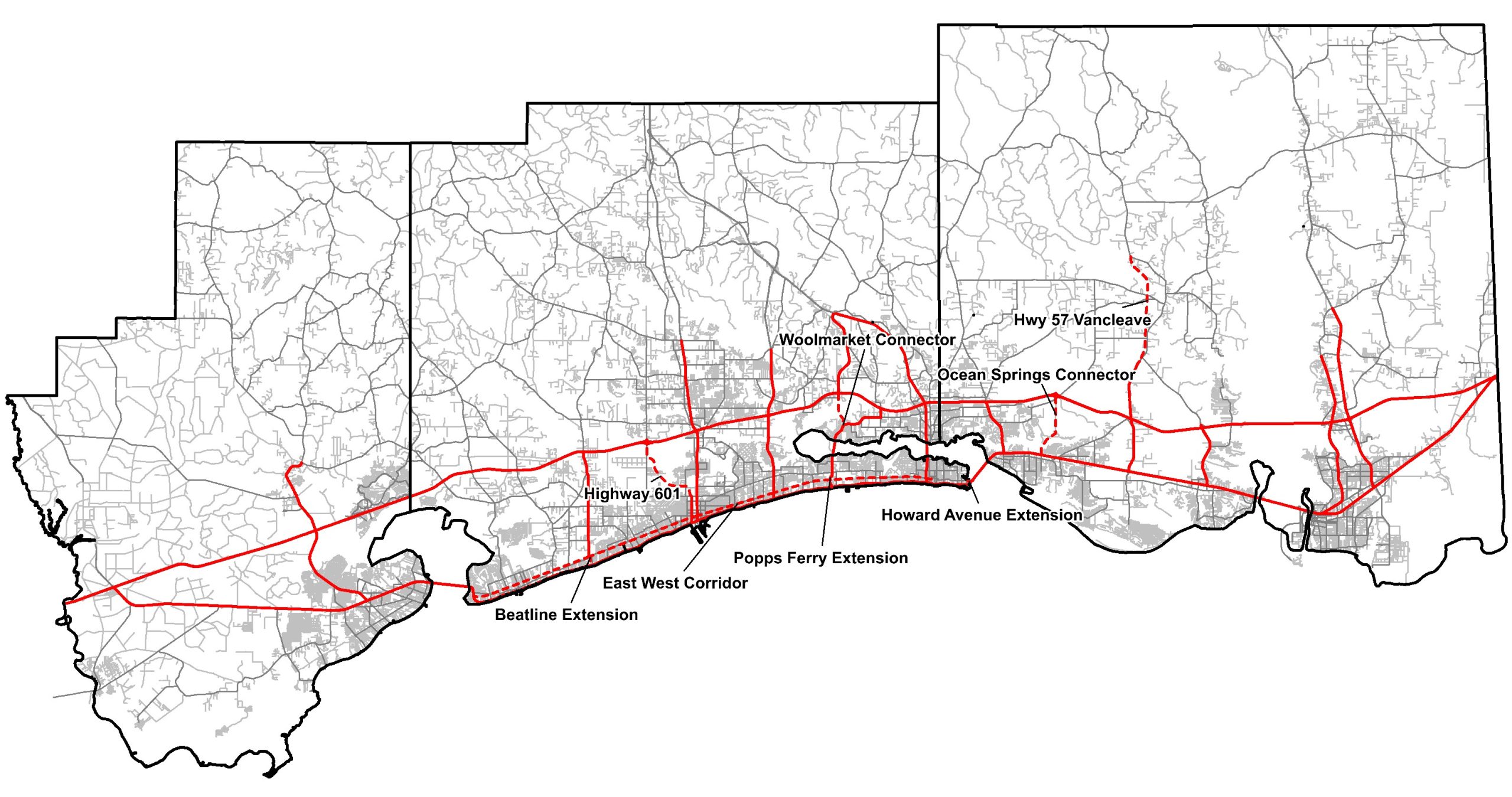Gulf Coast Mobility Corridors
Ensuring a data driven, objective, and balanced analytical approach, GRPC strives to provide information for the development of projects and programs that increase safety, improve mobility, and access to opportunity, while promoting quality of life.

Mobility & Accessibility
Objective:
Enhance regional connectivity - Improve mobility by reducing traffic congestion and delay
Strategy:
Provide critical linkages enabling more direct travel
Performance Measure:
Vehicle Miles Traveled (VMT) in the region

Regional Travel
Due to the linearity of urban development in the Mississippi Gulf Coast region, north-south mobility is
very important to provide movement between the two major travel corridors—Interstate 10 and US
Highway 90–spanning the three coastal counties from Alabama to Louisiana. Mobility is essential for
many reasons including, but not limited to, hurricane evacuation and daily work commutes. Particular attention should be made to improvements to the mobility corridors because of the high daily traffic that occurs on them. Funding allocation to improved linkages, reducing congestion, lighting, and pedestrian and bicycle infrastructure projects on these corridors should be a priority.
North-South Connectors
When major storms approach the region from the Gulf of Mexico, north-south connectors are used by Gulf Coast residents to reach I-10. Commuters use the north-south connectors daily as they make long commutes to major employment sites such as Stennis, Ingalls and Chevron.
The Mississippi Gulf Coast mobility corridors facilitate the flow of traffic throughout the region. The
corridors establish generalized travel patterns which form the primary routes of choice used by the
population for the majority of their travel needs. Most relatively long-distance trips being made within
the region are a combination of major arterial and interstate movements. North-south mobility corridors should provide a continuous and direct route connecting I-10 and US 90.
East-West Connectors
The Gulf Coast transportation infrastructure is vulnerable to predicted changes in sea levels and increases in severe weather and extreme high temperatures. Mobility corridors such as US 90 that have low-lying areas are subject to flooding and are more likely to suffer the damaging effects of inundation and affect mobility in times of flooding. North of the interstate there does not yet appear to be a well-defined concept for enhanced east-west mobility, but as development pushes further inland in the years ahead the need for a continuous route connecting major north-south corridors north of I-10 is likely to become more apparent.

